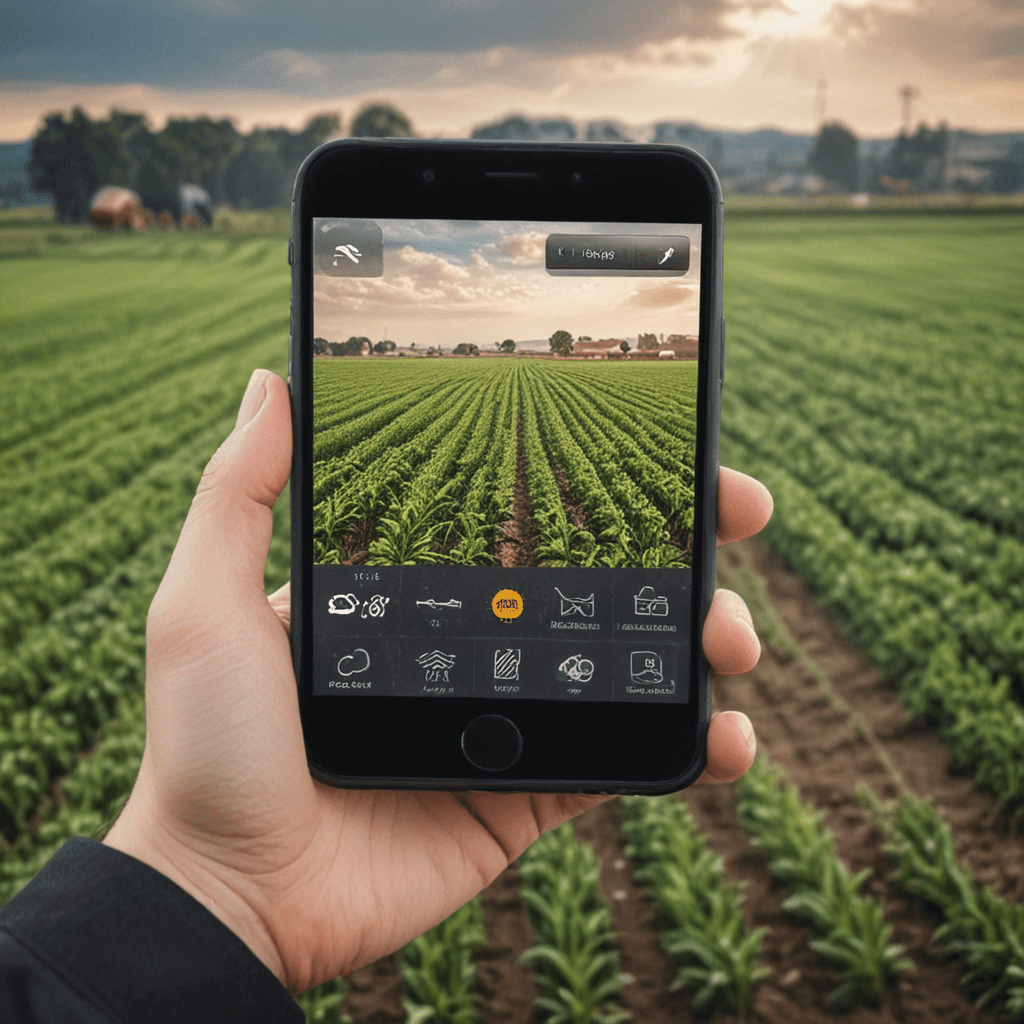
1. Precision Farming with Mobile Apps
Mobile applications are revolutionizing precision farming practices, enabling farmers to optimize crop yields and minimize environmental impact. These apps provide real-time data on soil conditions, crop health, and weather patterns. Farmers can use this information to make informed decisions about irrigation, fertilization, and pest control, resulting in increased productivity and profitability.
2. Soil and Crop Monitoring through Mobile Sensing
Mobile devices equipped with sensors are transforming soil and crop monitoring. Farmers can use these devices to collect data on soil moisture, nutrient levels, and crop growth rates. This information helps them identify areas of their fields that require additional attention, allowing for targeted interventions and more efficient resource allocation.
3. Real-Time Crop Health Assessment
Mobile apps enable farmers to conduct real-time crop health assessments in the field. By capturing images of crops and analyzing them using image recognition algorithms, these apps can detect early signs of disease or nutrient deficiencies. This allows farmers to take prompt action to prevent crop damage and ensure optimal yields.
4. Farm Management Optimization using Mobile Platforms
Mobile platforms are streamlining farm management processes, providing farmers with tools for data management, task tracking, and inventory control. Farmers can use these apps to create digital records, monitor livestock, and manage their finances. The centralized and accessible nature of this information supports efficient decision-making and operational optimization.
5. Smart Irrigation Systems Driven by Mobile Apps
Mobile apps are playing a crucial role in the development of smart irrigation systems. These systems use sensors to monitor soil moisture levels and automatically adjust irrigation schedules based on real-time data. This approach not only conserves water but also optimizes crop yields by ensuring plants receive the precise amount of water they need.
6. AI and Machine Learning for Advanced Crop Analysis
Artificial intelligence (AI) and machine learning (ML) are revolutionizing crop analysis in mobile agriculture. These technologies enable apps to analyze vast amounts of data to identify patterns and make predictions. Farmers can use AI-powered apps to detect crop diseases at early stages, estimate crop yields, and optimize planting and harvesting decisions.
7. Mobile-Based Pest and Disease Detection
Mobile apps equipped with image recognition capabilities are empowering farmers to identify pests and diseases in their crops. By capturing images of affected plants, farmers can use these apps to quickly identify the problem and access information on its treatment. This expedites pest and disease management, reducing crop damage and preserving yields.
8. Market Connectivity and E-Commerce Platforms for Farmers
Mobile apps are bridging the gap between farmers and markets. E-commerce platforms allow farmers to sell their produce directly to consumers, eliminating intermediaries and increasing their profit margins. Additionally, apps provide farmers with access to market information, enabling them to make informed decisions about pricing and distribution.
9. Cloud Computing for Remote Data Management
Cloud computing plays a crucial role in mobile agriculture by providing farmers with a secure and accessible platform for data storage and management. This allows farmers to store their data remotely, access it from any location, and share it with trusted parties. Cloud computing also facilitates collaboration and data sharing among farmers, researchers, and agricultural experts.
10. Future Trends and Innovations in Mobile Agriculture
The future of mobile agriculture is bright, with ongoing advancements and emerging technologies promising to further enhance farming practices. These include the integration of drones for crop monitoring, blockchain for secure data management, and augmented reality for interactive farm management. As the industry evolves, mobile agriculture will continue to empower farmers with innovative tools to increase productivity, sustainability, and profitability.
FAQ
Q: How can mobile agriculture help farmers improve their operations?
A: Mobile agriculture provides farmers with real-time data, advanced analytics, and streamlined management tools to optimize crop yields, reduce environmental impact, and increase profitability.
Q: What are the benefits of using mobile apps for soil and crop monitoring?
A: Mobile apps enable farmers to collect accurate and timely data on soil and crop conditions, helping them identify areas requiring attention and make informed decisions for improved crop management.
Q: How can AI and ML enhance mobile agriculture?
A: AI and ML algorithms analyze vast amounts of data to identify patterns, predict crop health, and optimize farming practices, enabling farmers to make data-driven decisions for increased productivity and sustainability.
Q: What is the role of mobile apps in pest and disease management?
A: Mobile apps equipped with image recognition capabilities allow farmers to quickly identify pests and diseases, access treatment information, and take timely action to minimize crop damage and preserve yields.
Q: How does mobile agriculture benefit both farmers and consumers?
A: Mobile agriculture empowers farmers with innovative tools, while providing consumers with access to fresh and locally sourced produce through e-commerce platforms, contributing to a more efficient and sustainable food supply chain.


